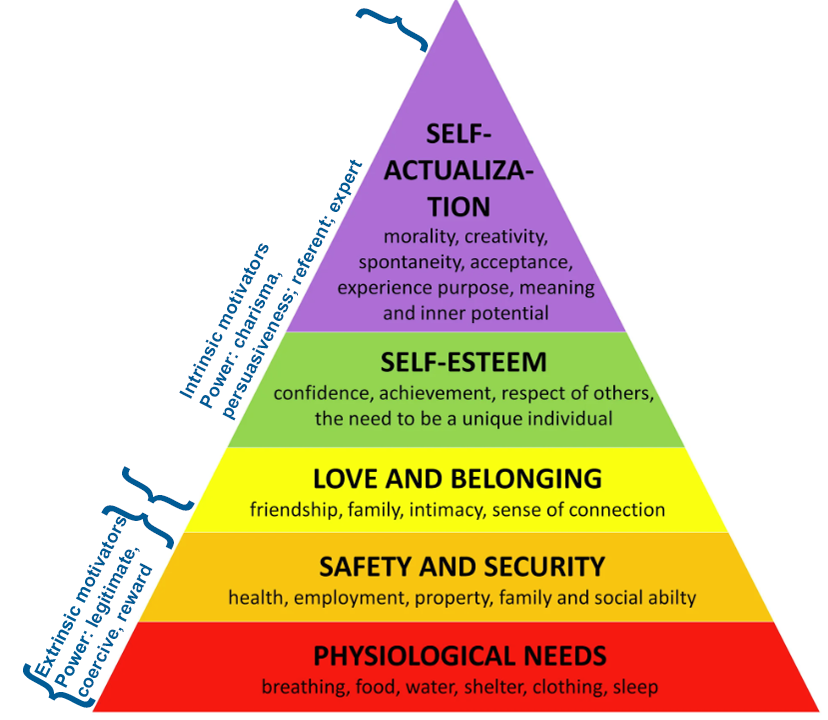Power Influencing Motivation
Motivation has two drivers: Extrinsic and Intrinsic. Extrinsic motivators are external driving factors. Punishment or rewards are considered extrinsic motivators. In contrast, intrinsic motivators are driving factors within a person. Relationships, self-esteem, and self-efficacy are intrinsic motivators.
Maslow's Hierachy of Needs explains concisely factors impacting individuals at different levels of motivation. Consider the guide on the right. Individuals motivation increases as their needs are met. For example,an individual who has safe housing, food, and employment is more likely to be motivated to develop relationships. The opposite is also true. If that same individual is suddenly homeless, he may find it more difficult to consider being an effective member of a work team.
Now let's consider how power plays in motivation. In the video from the previous section, the presenter spoke of the influence of power on those who may not have equitable circumstances. Think about those parties. Where are they on Maslow's Hierarchy of Need pyramid? Which forms of power will motivate others at different levels of the pyramid?
As we review the pyramid, consider the types of power one can exert on teams or in communities. What types of power will work when someone is at the bottom of the pyramid? What types of power will they use? Review the levels on the pyramid, and motivation and power types. How would you use these these power types? Are there others to consider?

